NUTRITION LABELLING: DIFFERENCES BETWEEN MAJOR MARKETS (EU, USA, CANADA, CHINA, JAPAN)
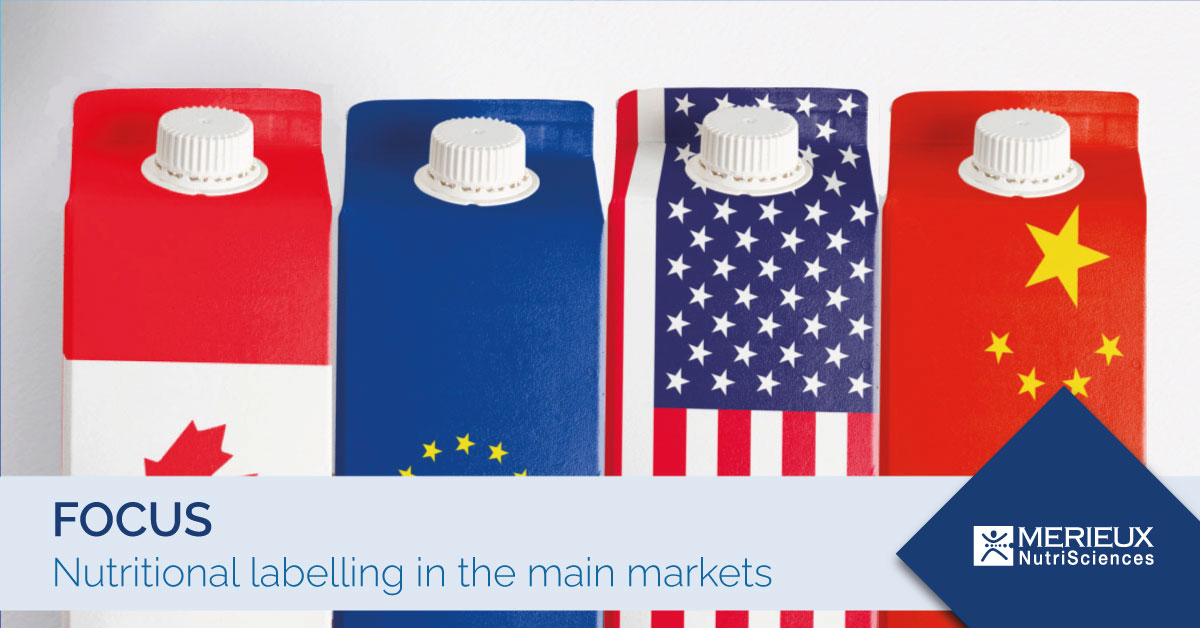
The nutrition declaration is mandatory information for most pre-packaged food products, which requires compliance with specific requirements depending on the destination market of the product.
So, let's take a look at the main requirements for the European Union, the USA, Canada, China and Japan that have to be met in order to export a product that complies with the specific regulations of each market.
UE
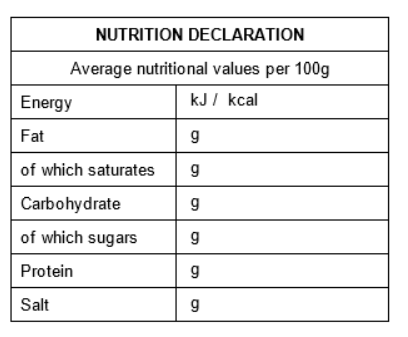
The nutritional declaration includes:
- 7 mandatory nutrients
- optional rounding rules, but recommended according to DG Sanco guidelines
- nutrition declaration per 100g or 100ml
- the table format or, if there is not sufficient space* to accommodate it, the linear format
*today, neither EU Reg. 1169/2011 nor interpretative documents provide precise criteria for the quantification of "sufficient space". Unlike other legal systems (USA, Canada, ...), the EU regulation does not define a criterion, nor does it quantify an area limit that is decisive for the choice of a presentation format over another.
Therefore, subject to compliance with the minimum font size, clarity and legibility of the nutrition information, the presentation of the nutrition declaration in a linear format is acceptable. However, in some Member States, such as Germany, the idea is emerging that a tabular format should be considered as a "discriminating" criterion if there is sufficient space remaining following the inclusion of all mandatory claims. In fact, according to this interpretation, pictures or marketing information cannot replace the space used for mandatory information including the nutrition declaration in tabular form and therefore the entire available area must be considered.
CANADA
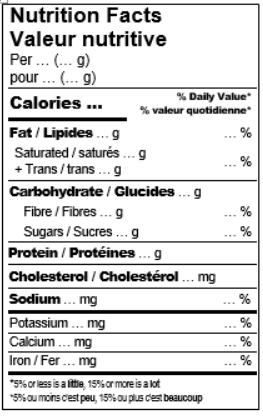
The Nutrition Facts includes:
- 12 mandatory nutrients
- bilingualism
- mandatory rounding rules
- nutrition declaration expressed per serving size
- format to be selected according to the total area available for labelling
In detail:
Serving Size
Represents the portion of the product that best approximates the reference amount (usually consumed by an individual in 1 session) set for each product category (Reference Amount), expressed in "household" + international units (g, ml, etc.).
Format
The Nutrition Facts Table must be displayed on the Available Display Surface (ADS) of the pack and must not occupy more than 15% of the ADS. This is defined as the total area of a package that is physically available for labelling (i.e. not just the label) and includes all non-labelled surfaces on which the information can be read and easily displayed. Based on the ADS, the Canadian regulations allow the use of different label formats. In particular, the choice of the appropriate model is made through the use of Decision Trees. The Decision Trees, for each format family, provide a step-by-step strategy for determining the appropriate format and version (size) of the table.
USA
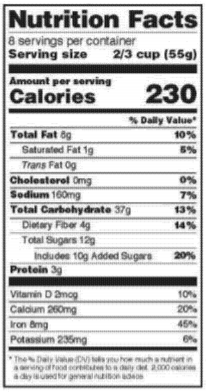
The Nutrition Facts includes:
- 14 mandatory nutrients
- mandatory rounding rules
- nutrition declaration per serving size
- format to be selected according to the total area available for labelling
In detail:
Serving Size
Represents the portion of the product that best approximates the reference amount set for each product category (Reference Amount), expressed in "household" + international units (g, ml, etc.).
Format
The nutrition table must be placed on the Principal Display Panel (PDP) or, if there is not sufficient space, on the Information Panel (IP).
The choice of format (vertical, horizontal or linear) is based on the measurement of the total surface area available, i.e. the surface of the packaging that can potentially be labelled, which excludes only unsuitable surfaces (irregular surfaces that would not allow the information to be clearly read) such as caps, bottoms, top and bottom fittings of cans, shoulders and necks of bottles or jars.
Based on the total surface area available, the appropriate model can be chosen.
JAPAN
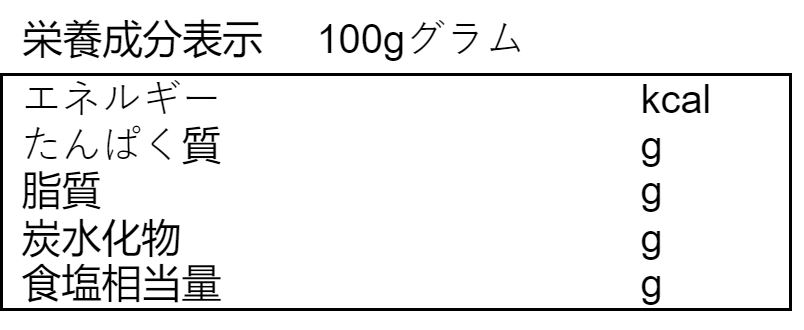
The nutritional declaration includes:
- 4 mandatory nutrients (protein, fat, carbohydrate, salt)
- mandatory rounding rules
- nutrition declaration per 100g or 100ml
- mandatory nutrition table format
CHINA
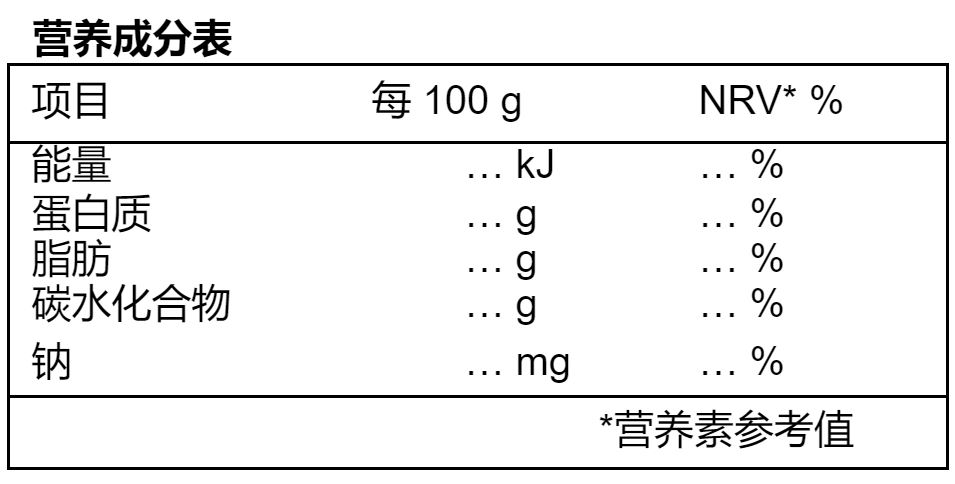
The nutritional declaration includes:
- 4 mandatory nutrients (protein, fat, carbohydrate, salt)
- mandatory rounding rules
- nutrition declaration per 100g or 100ml
- mandatory tabular format of the nutrition table, with the exception of packages with a total area <100 cm2 where a linear format can be accommodated
Of note, is the recent closure of a public consultation period for 16 national standards, including the nutrition labelling standard which will undergo some changes. More news is expected in the coming months.
In conclusion, due to the multitude of formats and mandatory nutrients, it is necessary to take this aspect into account when creating the nutrition tables on the pack in order to achieve an adequate analytical profile and ensure that the label complies with the regulations of the destination country.

